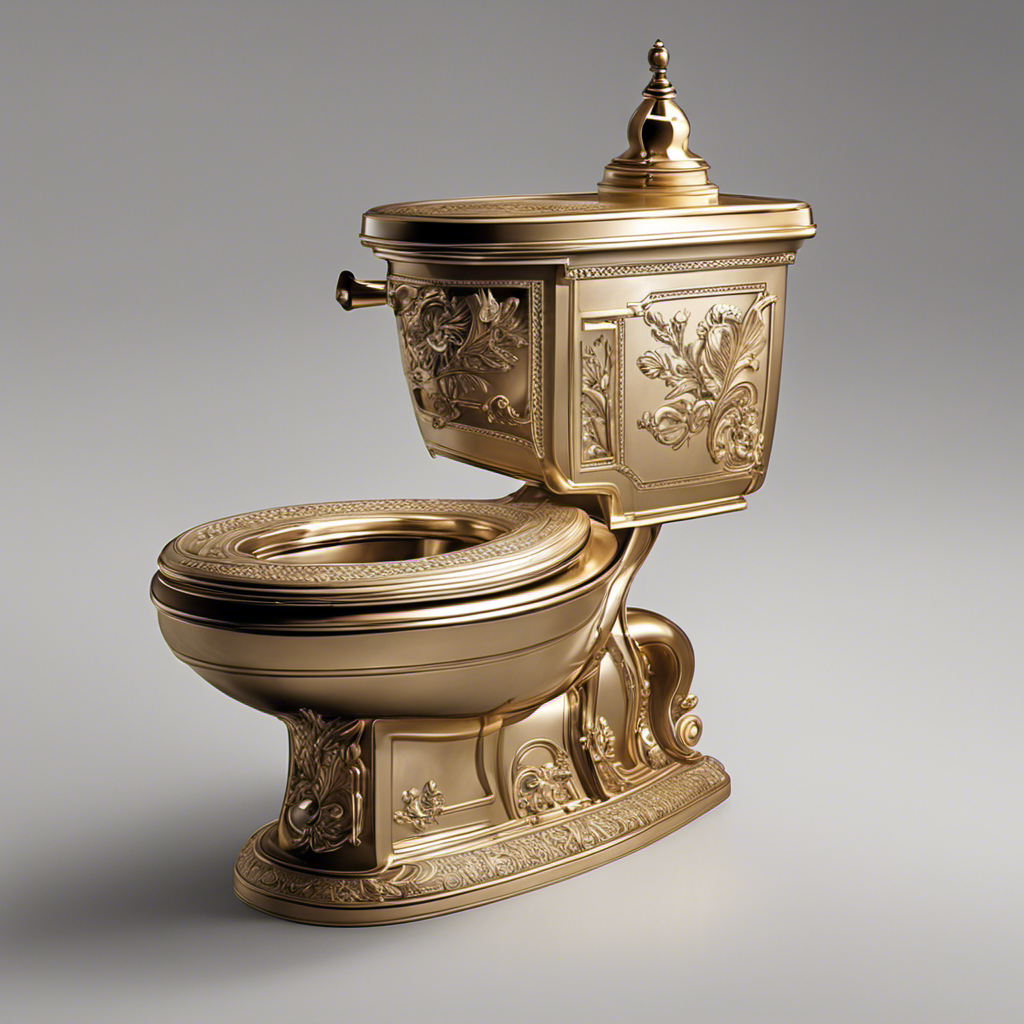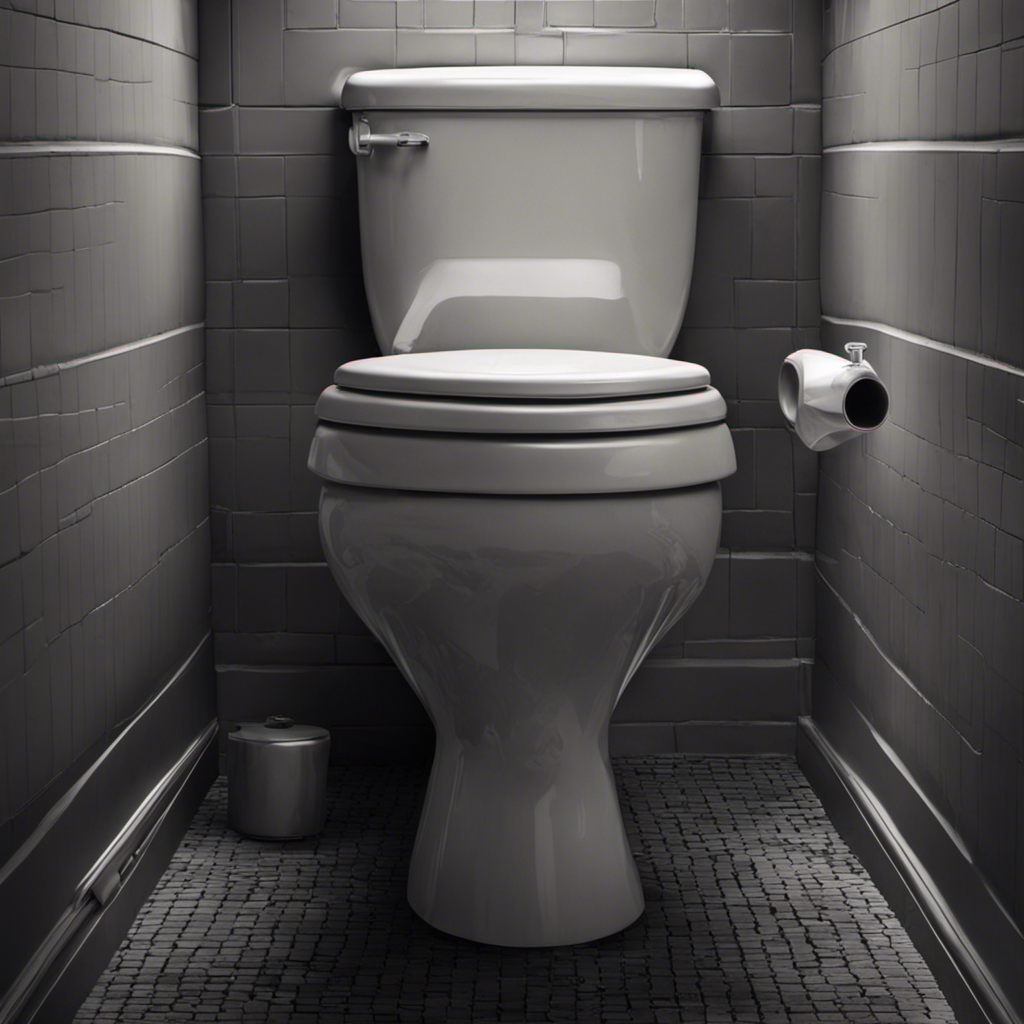Ever curious about the large, water-holding device situated behind your toilet? We’ve got the explanation for you.
In this article, we will delve into the world of toilet storage tanks, exploring their purpose, anatomy, historical evolution, and common names.
We will also reveal the technical term for these tanks and discuss the different types available.
So, if you’re looking to master the knowledge of toilet storage tanks, you’ve come to the right place.
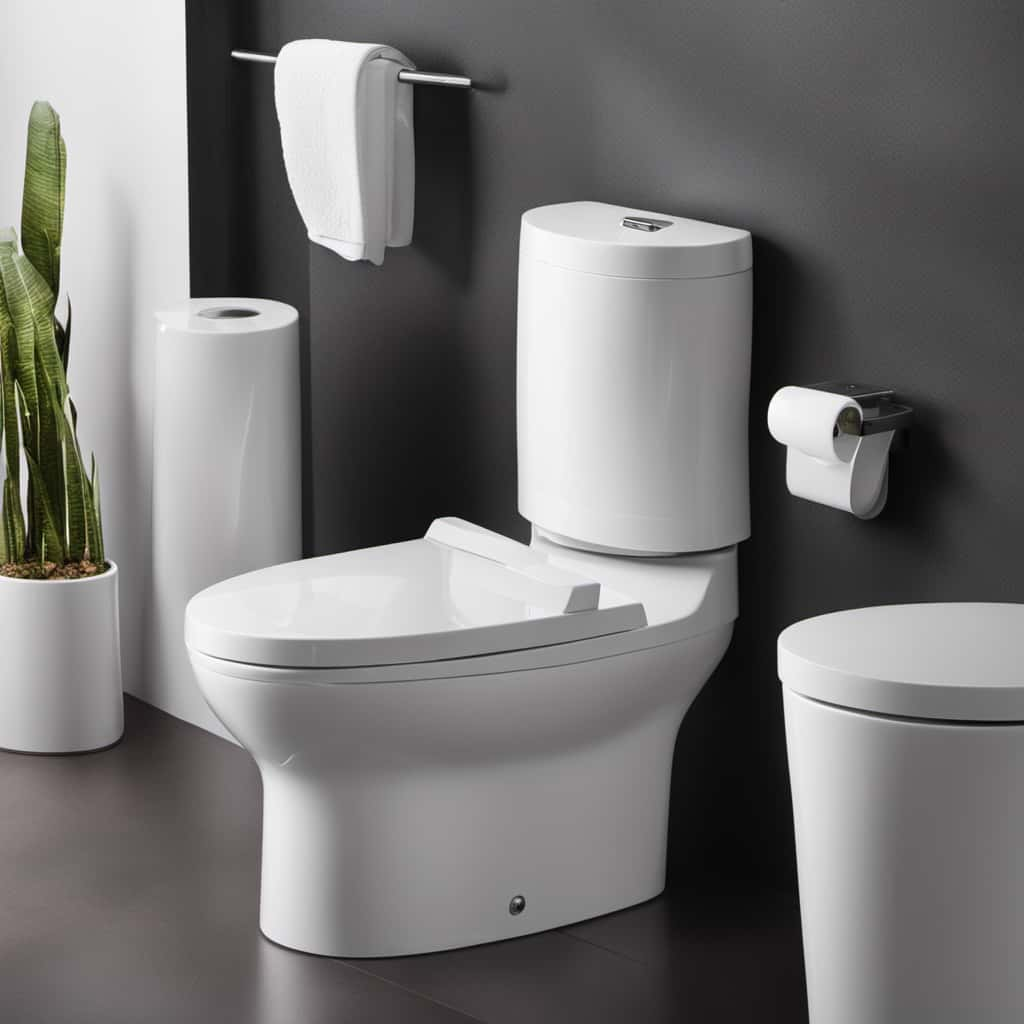
Key Takeaways
- Toilet storage tanks are responsible for storing and distributing water for flushing.
- The key components of a toilet storage tank include the fill valve, flush valve, and trip lever.
- Ancient civilizations had their own versions of toilet tanks that used gravity for flushing.
- Modern innovations in toilet storage tank designs include smart tanks with water-saving mechanisms and automatic flushing.
The Purpose of a Toilet Storage Tank
Why do we need a toilet storage tank?
The purpose of a toilet storage tank is to store and distribute water for flushing. Water pressure plays a crucial role in ensuring efficient flushing. When the toilet is flushed, water from the tank is released into the bowl, creating a powerful force that removes waste. Adequate water pressure is necessary to ensure a thorough and effective flush.
Additionally, the size of the tank can impact flushing efficiency. A larger tank allows for a greater volume of water, resulting in a stronger flush. However, it’s important to strike a balance, as an oversized tank may lead to excessive water usage. Therefore, selecting an appropriate tank size is essential to achieve optimal flushing performance while conserving water.
The Anatomy of a Toilet Storage Tank
Now let’s explore how a toilet storage tank is structured and what components make up its anatomy.
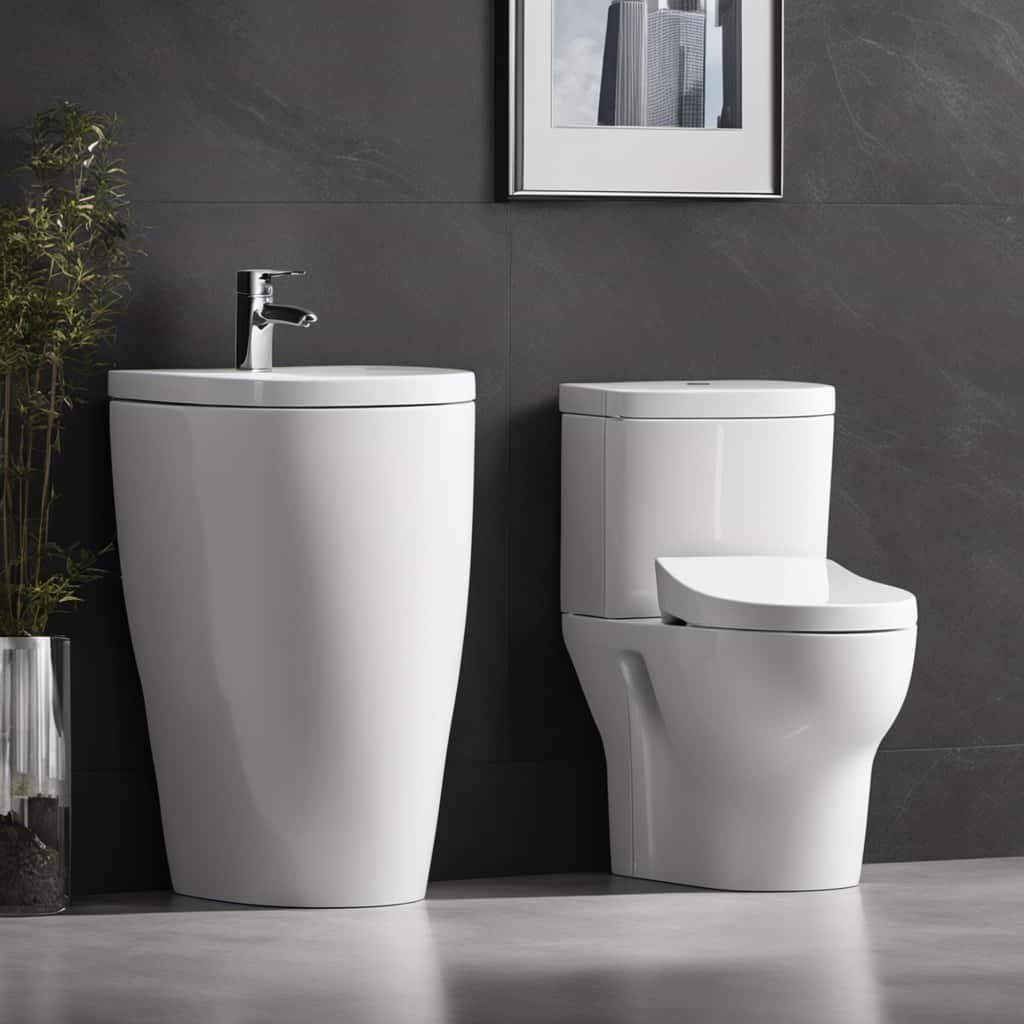
The tank is typically made of different materials, such as porcelain, ceramic, or plastic. These materials are chosen for their durability and resistance to water damage.
Inside the tank, you’ll find several key components. The fill valve, also known as the ballcock, regulates the water level in the tank.
The flush valve, or flapper, controls the release of water into the bowl during flushing.
The trip lever, located outside the tank, activates the flush mechanism.
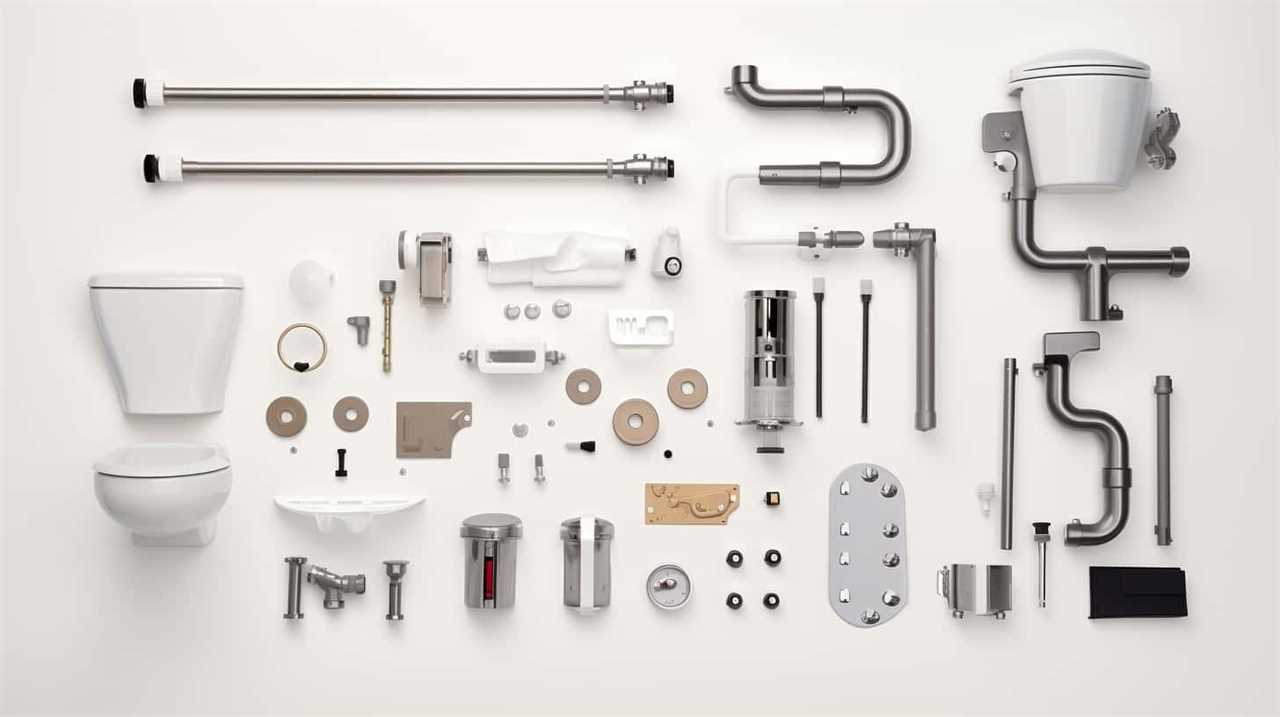
Troubleshooting tank issues may involve inspecting these components for leaks, blockages, or malfunctions.
Historical Evolution of Toilet Storage Tanks
Let’s take a look at the historical evolution of toilet storage tanks, from ancient designs to modern innovations.
Ancient civilizations, such as the Indus Valley and Ancient Rome, had their own versions of toilet tanks that used gravity to flush waste away.
Over time, advancements in plumbing technology and materials have led to the development of more efficient and water-saving tank designs.
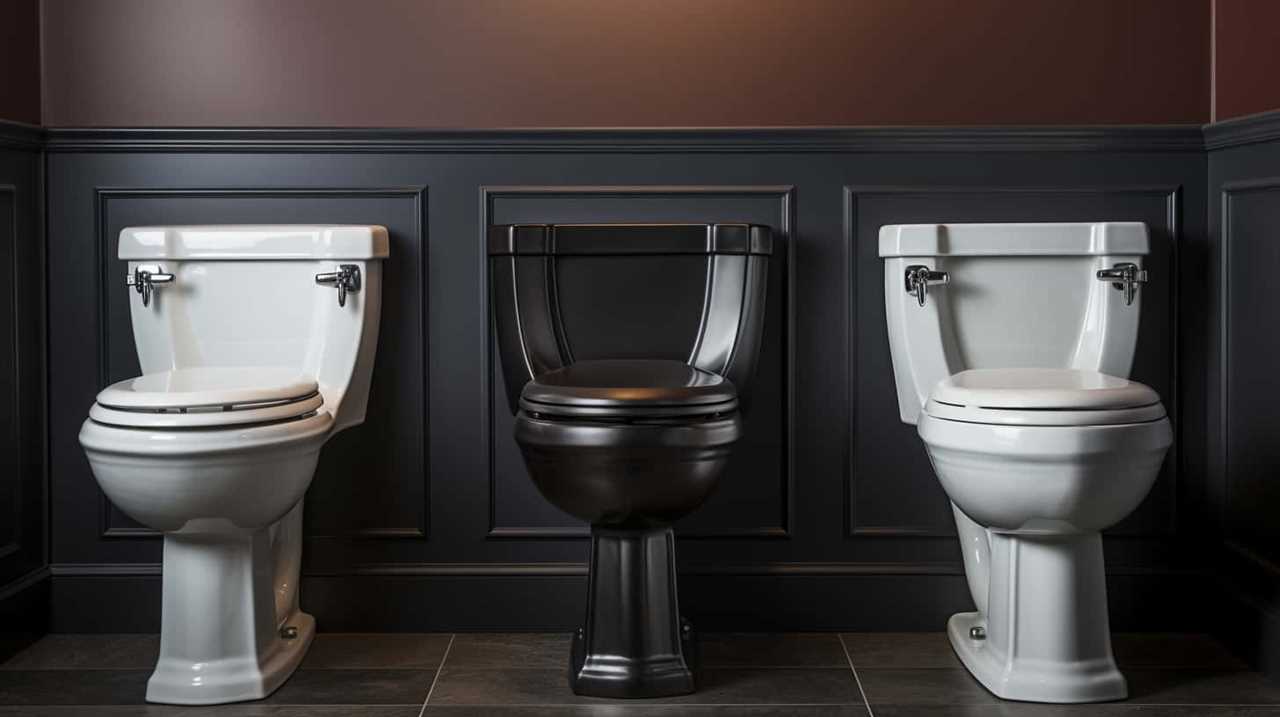
These include dual-flush toilets, which allow users to choose between a partial flush for liquid waste and a full flush for solid waste.
Another innovation is low-flow toilets, which use less water per flush compared to traditional toilets, reducing water consumption and environmental impact.
These modern tank designs also incorporate features like pressure-assisted flushing, which uses compressed air to increase flushing power and improve waste removal.
Ancient Toilet Tank Designs
As we delve into the historical evolution of toilet storage tanks, it’s fascinating to explore ancient toilet tank designs. These designs, crafted by ancient civilizations, showcase their ingenuity and resourcefulness in creating efficient systems for waste disposal.
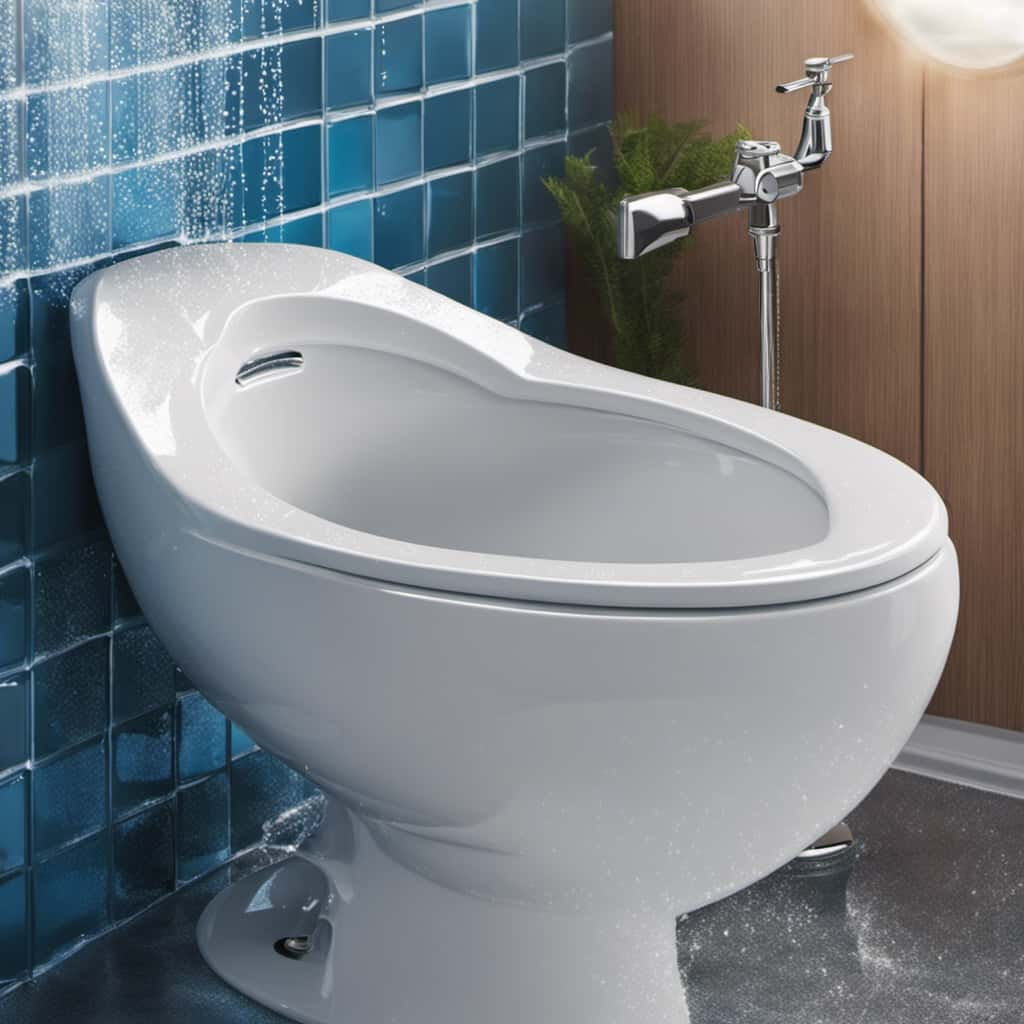
Here are three notable ancient toilet tank designs:
- Stone reservoirs: In ancient times, stone was a commonly used material for constructing toilet storage tanks. These reservoirs were often built underground, providing a sturdy and durable solution for waste management.
- Clay pots: Some ancient civilizations, such as the Romans, utilized clay pots as toilet tanks. These pots were connected to a drainage system, allowing for the collection and disposal of waste.
- Wooden barrels: In certain cultures, such as ancient Japan, wooden barrels were used as toilet storage tanks. These barrels were carefully sealed to prevent leakage and were emptied regularly.
The significance of these ancient toilet tank designs lies in their contribution to the development of modern sanitation systems. By studying these designs, we gain insight into the evolution of waste management practices and appreciate the advancements made over time.
Modern Tank Innovations
After exploring ancient toilet tank designs, it’s important to examine the modern innovations that have shaped the historical evolution of toilet storage tanks.
In recent years, advancements in technology and materials have revolutionized the design and functionality of toilet storage tanks. The introduction of modern tank materials, such as high-density polyethylene (HDPE) and fiberglass-reinforced plastic (FRP), has greatly improved durability and resistance to corrosion. These materials are lightweight, yet strong, making them ideal for toilet storage tanks.
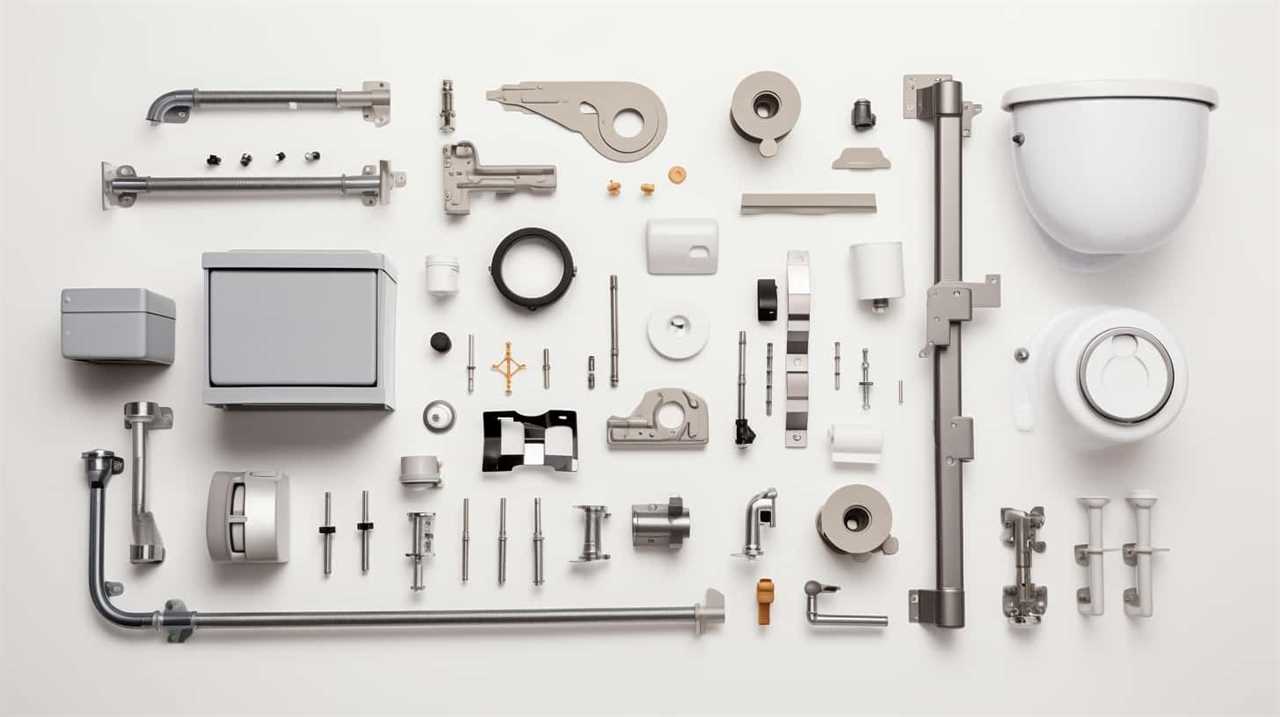
Additionally, smart toilet storage tanks have emerged, incorporating advanced features such as water-saving mechanisms, automatic flushing, and leak detection systems. These tanks are equipped with sensors and intelligent controls, allowing for efficient water usage and proactive maintenance.
With the continuous development of modern tank innovations, the future of toilet storage tanks looks promising in terms of sustainability, efficiency, and user convenience.
Common Names for Toilet Storage Tanks
We commonly refer to the toilet storage tank as the reservoir. However, there are alternative names that have emerged over the years as creative tank designs have become more popular.
Here are three common names for toilet storage tanks:
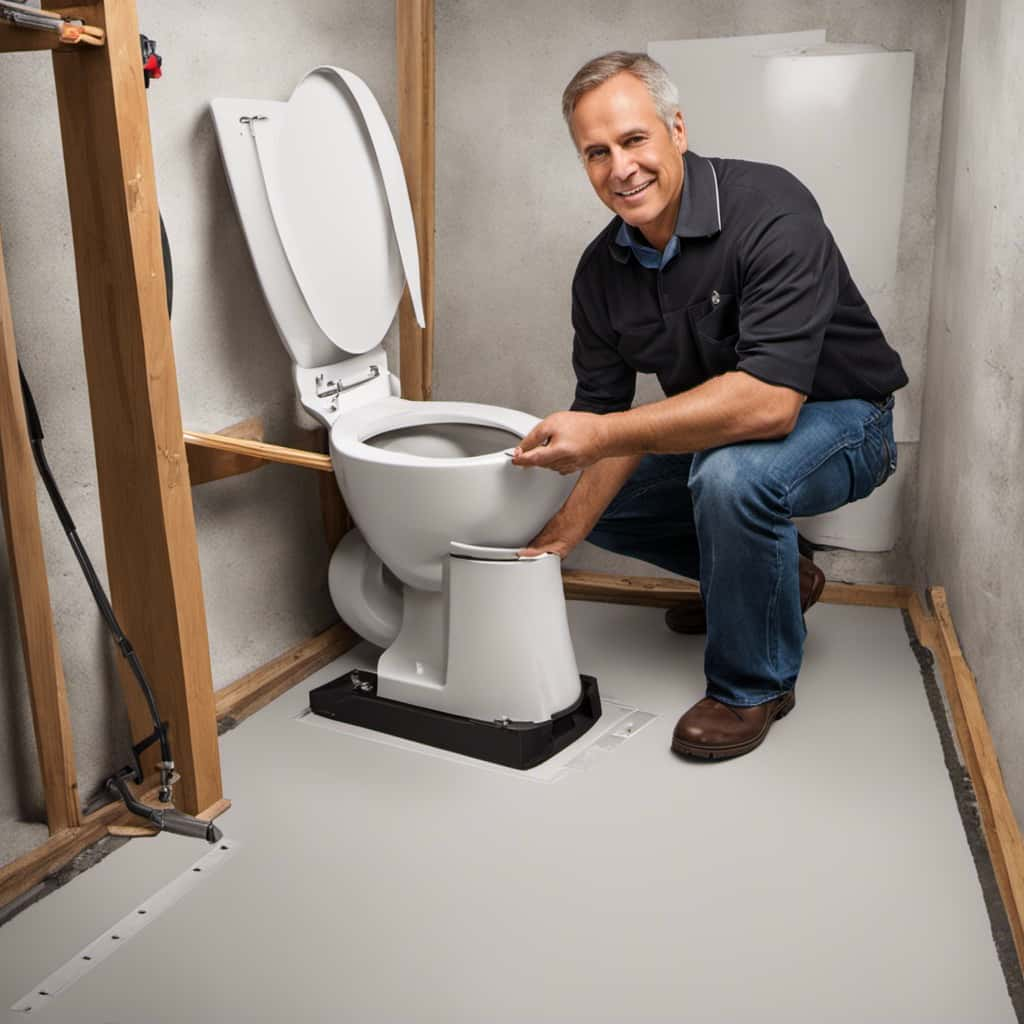
- Cistern: This term is commonly used in British English and refers to the tank that holds water for flushing the toilet. Cisterns come in various shapes and sizes, and some even have dual-flush mechanisms for water conservation.
- Tank: The term ‘tank’ is a more general name used to describe the storage container for water in a toilet. Tanks can be made of porcelain, plastic, or metal and are typically located behind or above the toilet bowl.
- Reservoir: While ‘reservoir’ is the most common name, it’s worth mentioning that some people still use this term to describe the toilet storage tank. Reservoirs are an essential component of the toilet system, providing the necessary water for flushing.
The Technical Term for a Toilet Storage Tank
Let’s now turn our attention to the technical term for a toilet storage tank. While many people refer to it simply as a ‘tank,’ there’s a more specific and precise term we can use.
It’s commonly known as the ‘cistern.’ This term is widely used in the plumbing industry to describe the water storage component of a toilet system.
Proper Terminology for Tank
During our research, we discovered that the technical term for a toilet storage tank is known as a cistern. However, it’s important to note that there are alternative names used to refer to a toilet storage tank, depending on the region and context.
Here are three common terms associated with a toilet storage tank:
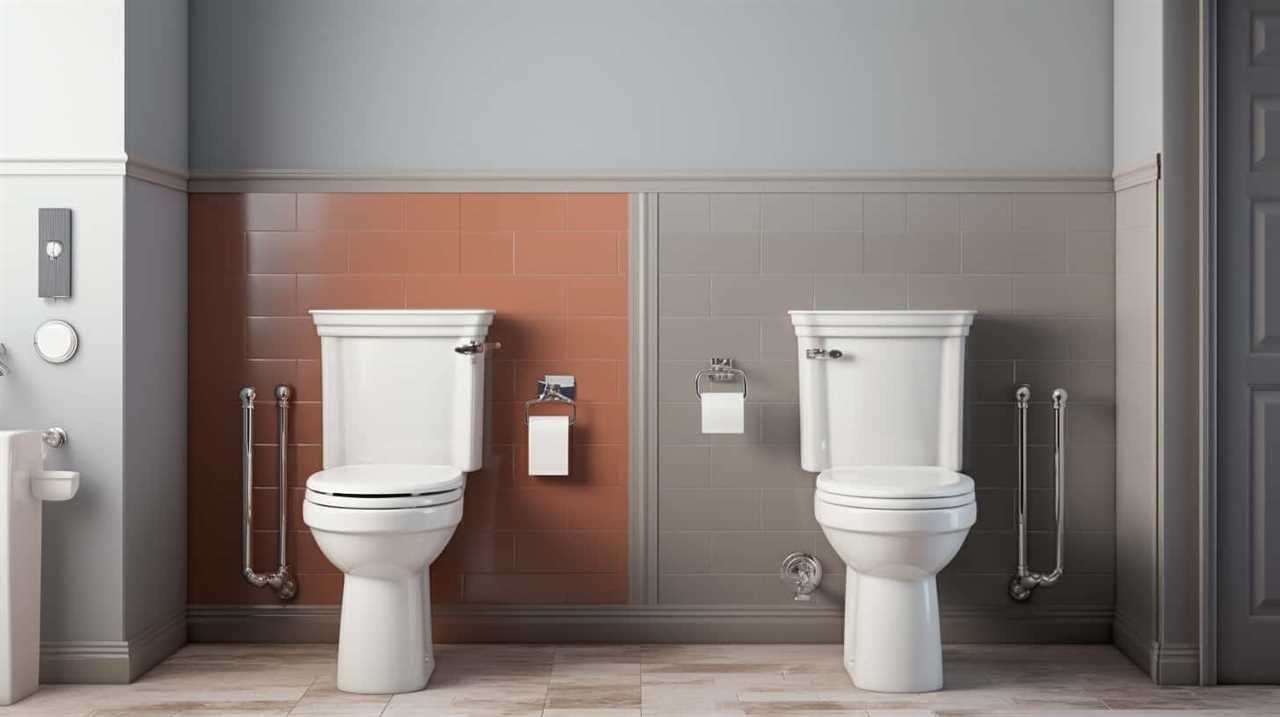
- Water tank: This term is often used to refer to the storage tank in a toilet system that holds the water used for flushing.
- Reservoir: In some cases, the toilet storage tank is referred to as a reservoir, as it serves as a container for holding a supply of water.
- Flush tank: Another name for a toilet storage tank is the flush tank, since it’s responsible for storing the water needed for flushing the toilet bowl.
Understanding the proper terminology for a toilet storage tank can help enhance your knowledge and communication about plumbing systems.
Common Names for Tank?
Continuing from the previous subtopic, the technical term for a toilet storage tank, we’ll now explore the common names used to refer to it.
While the technical term is ‘toilet storage tank,’ there are several alternative terms and different names that are commonly used in everyday language.
One such name is simply ‘toilet tank.’ This term is widely understood and commonly used by the general public.

Another common name for the tank is ‘cistern.’ This term is more commonly used in British English and may not be as familiar to those outside of the UK.
Additionally, some people may refer to the tank as the ‘water tank’ or ‘flush tank.’
Regardless of the specific name used, it’s important to understand that these terms all refer to the same component of a toilet system.
Understanding the Function of a Toilet Storage Tank
To understand the function of a toilet storage tank, we need to examine its role in the flushing process. The tank, typically made of materials such as porcelain or plastic, serves as a reservoir for water that’s used to flush waste from the toilet bowl.

Here are three key functions of a toilet storage tank:
- Water storage: The tank holds a predetermined amount of water, ensuring that enough water is available for a complete flush.
- Flushing mechanism: When the flush lever is activated, the tank releases the stored water into the bowl, creating a force that carries away waste.
- Dual flush capability: Some tanks have a dual flush feature, allowing users to choose between a full flush for solid waste and a partial flush for liquid waste. This helps conserve water and reduce water bills.
Understanding the function of a toilet storage tank is essential for selecting the right type of tank for your needs. In the following section, we’ll explore the different types of toilet storage tanks available in the market.
Different Types of Toilet Storage Tanks
There are various types of toilet storage tanks available in the market. When it comes to the materials used in ancient tank designs, clay and stone were commonly used. These tanks were durable and capable of storing large amounts of water.
In modern times, however, tanks made of materials such as porcelain and fiberglass have become more popular due to their lighter weight and sleeker design. Additionally, advancements in water saving technology have led to the development of dual-flush tanks, which allow users to choose between a full flush or a partial flush depending on the waste being disposed of.
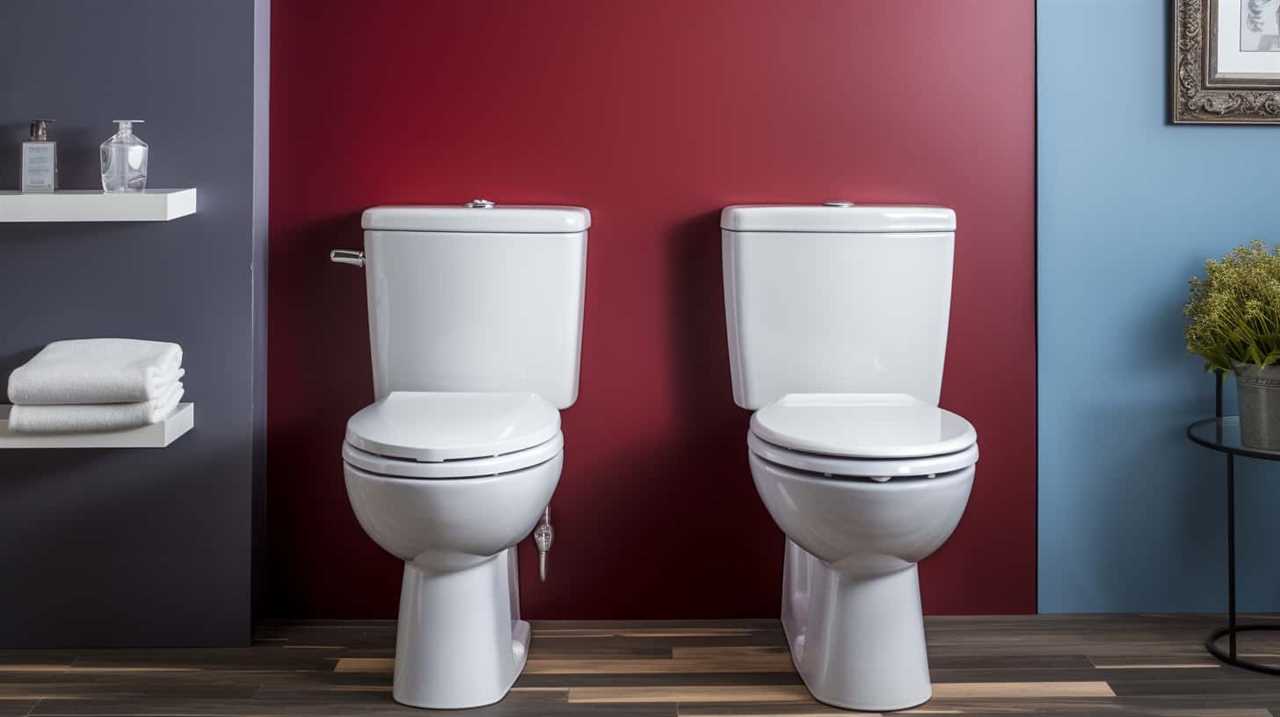
These tanks contribute to water conservation efforts by reducing the amount of water used per flush. Considering the variety of tank materials and water saving technologies available, it’s important to carefully consider these factors when choosing a toilet storage tank.
Factors to Consider When Choosing a Toilet Storage Tank
When choosing a toilet storage tank, we should consider several important factors. Understanding the function of the tank is crucial in making an informed decision. Here are three factors to consider:
- Water Efficiency: Look for a tank that has a low water consumption rate. Water-saving features like dual flush mechanisms can help reduce water wastage and contribute to conservation efforts.
- Size and Capacity: Consider the size and capacity of the tank to ensure it can accommodate the needs of your household. A larger tank may be necessary for households with more occupants, while a smaller tank may be suitable for single-person use.
- Material and Durability: Evaluate the material of the tank to ensure it’s durable and long-lasting. Common materials used for toilet storage tanks include porcelain, fiberglass, and plastic. Each material has its own advantages and disadvantages, so choose one that suits your preferences and requirements.
Maintenance and Care for Toilet Storage Tanks
When it comes to maintenance and care for toilet storage tanks, there are two key points to consider: preventing tank leaks and cleaning and disinfecting.
To prevent tank leaks, regular inspection of the tank’s components is essential, including the flapper valve, fill valve, and connections.
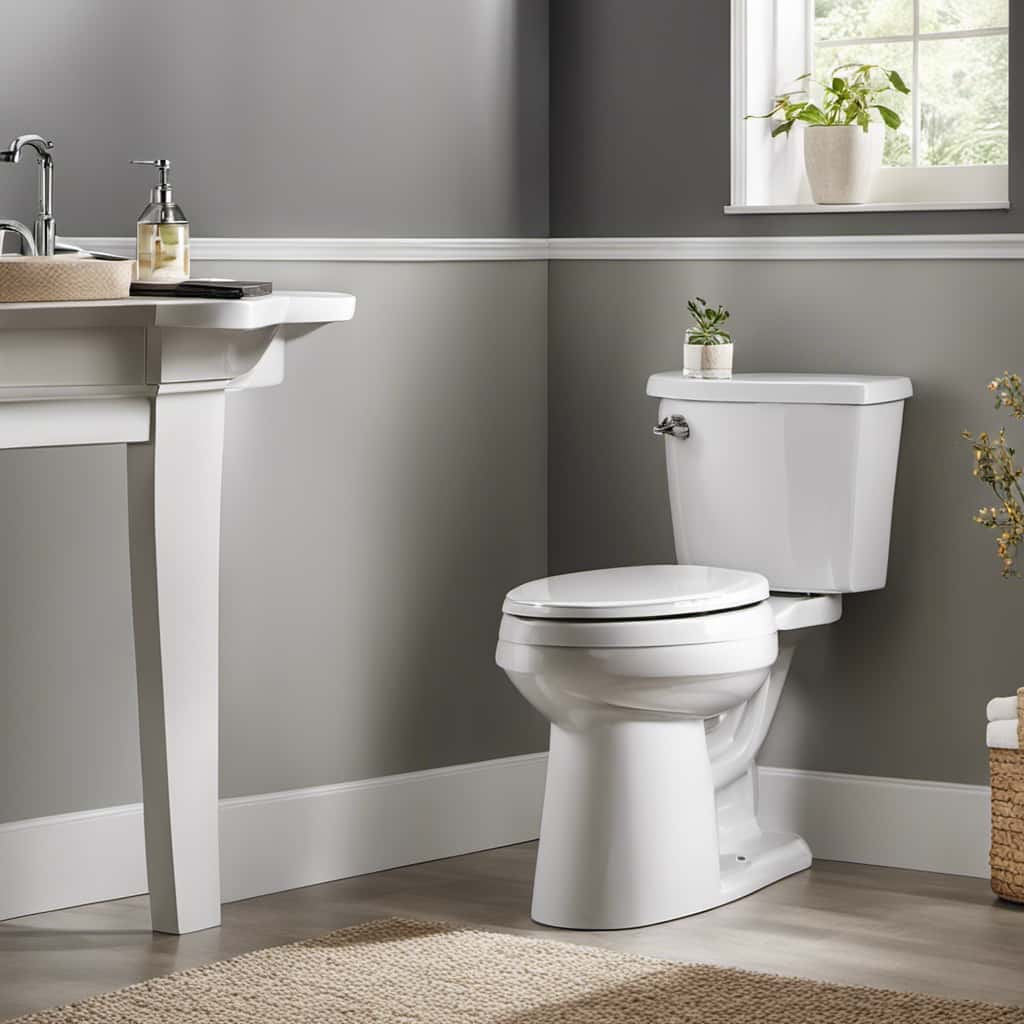
Additionally, cleaning and disinfecting the tank on a regular basis helps to prevent the buildup of bacteria and odors, ensuring optimal hygiene and functionality.
Preventing Tank Leaks
To ensure the longevity and functionality of our toilet storage tanks, we must prioritize the prevention of tank leaks through regular maintenance and careful care. Leaks in toilet storage tanks can lead to water wastage, damage to the surrounding area, and increased utility bills.
Here are three important steps to prevent leaks:
- Inspect the tank regularly: Check for any signs of cracks, corrosion, or loose fittings. These can be indications of potential leaks and should be addressed promptly.
- Replace faulty components: If you notice any damaged or worn-out parts, such as the fill valve or flapper, replace them immediately. Faulty components can cause leaks and affect the tank’s performance.
- Monitor water levels: Keep an eye on the water level in the tank. If it constantly fluctuates or overflows, it could be a sign of a leak or a faulty mechanism.
Cleaning and Disinfecting
Our approach to cleaning and disinfecting toilet storage tanks involves regular maintenance and careful care of the tank’s components. It’s important to keep the tank clean to prevent the buildup of bacteria and unpleasant odors.
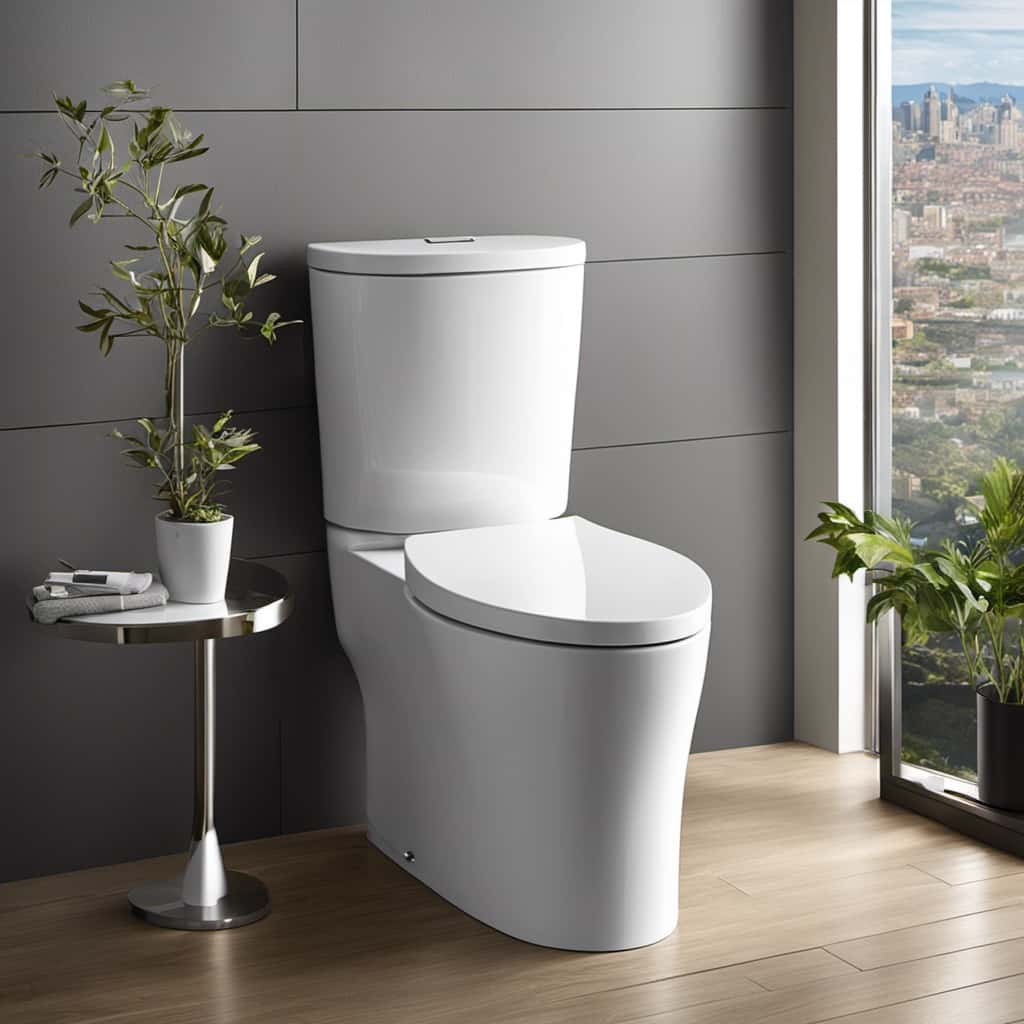
To clean the tank, start by turning off the water supply and flushing the toilet to drain the tank. Then, use a mild soap or cleaning solution and a soft brush to scrub the inside of the tank, paying special attention to the walls and corners. Rinse thoroughly with clean water and flush again to remove any remaining residue.
For disinfection, we recommend using eco-friendly disinfectants that are effective against a wide range of bacteria and viruses. Follow the manufacturer’s instructions for proper use and make sure to ventilate the area while disinfecting.
Regular cleaning and disinfection of the toilet storage tank will help maintain its functionality and ensure a hygienic environment.
Innovations in Toilet Storage Tank Designs
Over the years, we’ve witnessed significant advancements in toilet storage tank designs. These innovations haven’t only improved the functionality and efficiency of toilet storage tanks, but they’ve also addressed environmental concerns.
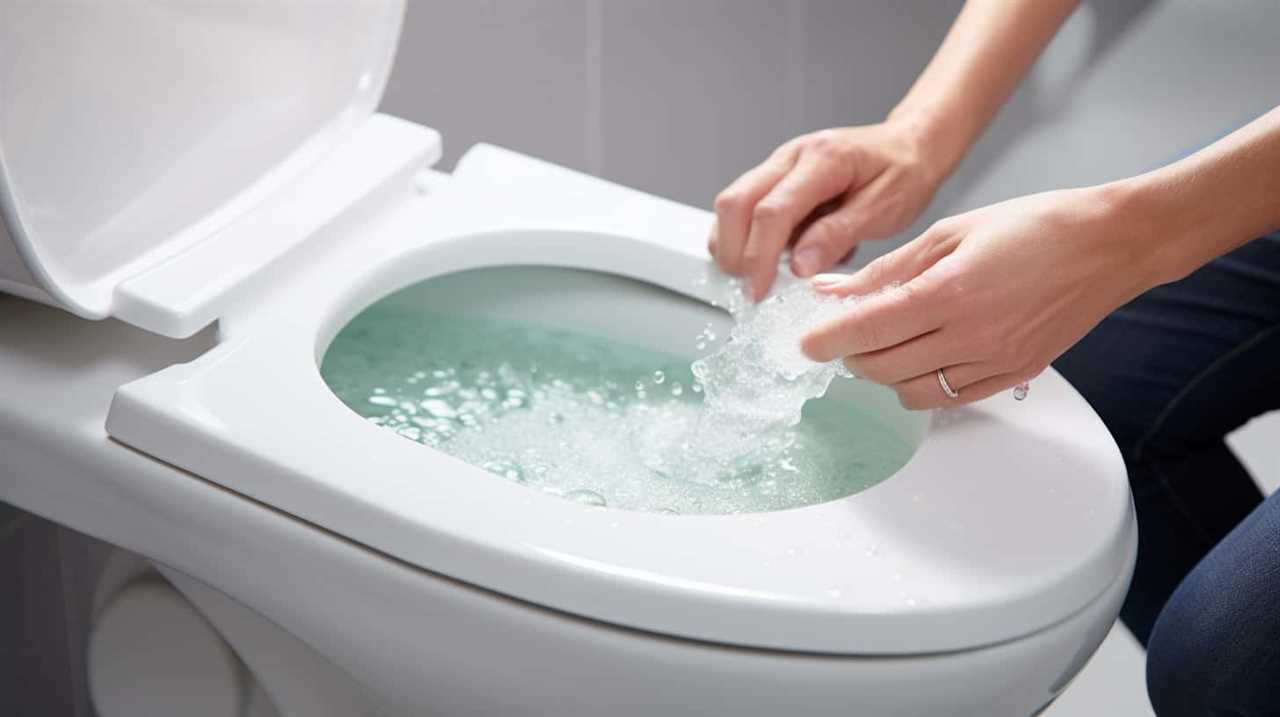
Here are three notable innovations in toilet storage tank designs:
- Eco-friendly materials: Manufacturers are now using sustainable and recyclable materials such as bamboo and recycled plastics to construct toilet storage tanks. This helps reduce the environmental impact caused by traditional materials like ceramic or metal.
- Dual-flush systems: Toilet storage tanks with dual-flush systems allow users to choose between a full flush and a partial flush, depending on their needs. This helps conserve water and reduces water wastage.
- Insulated tanks: Insulated toilet storage tanks are designed to prevent condensation and reduce heat loss. This not only prevents water wastage due to leaks but also saves energy by maintaining the water temperature.
These innovations in toilet storage tank designs demonstrate the industry’s commitment to sustainability and efficiency while offering improved functionality for users.
Conclusion
In conclusion, toilet storage tanks are an essential part of our daily lives, providing us with a convenient and efficient way to flush waste.
Interestingly, did you know that an average person flushes the toilet around six times a day? That adds up to approximately 2,190 flushes per year per person.
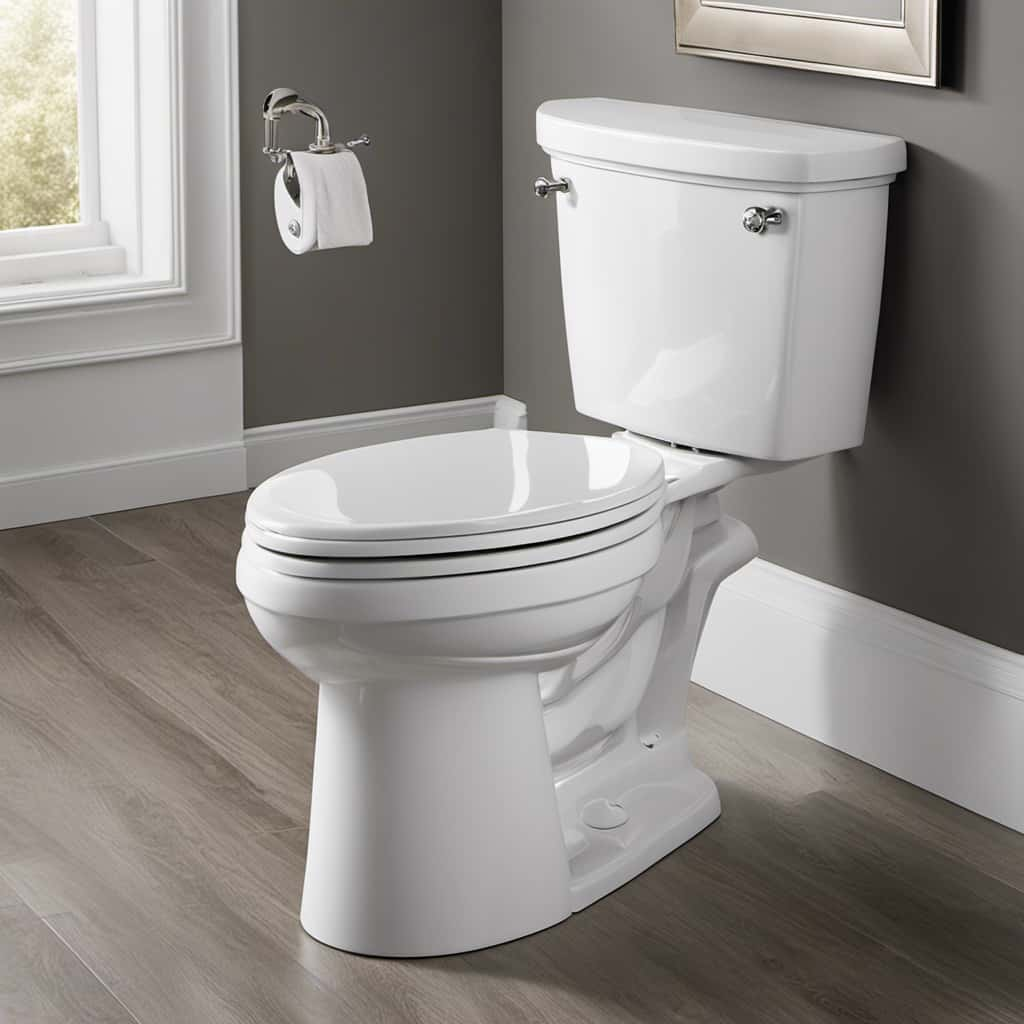
This statistic highlights the importance of having a well-functioning toilet storage tank that can withstand frequent use and ensure proper hygiene in our homes.



